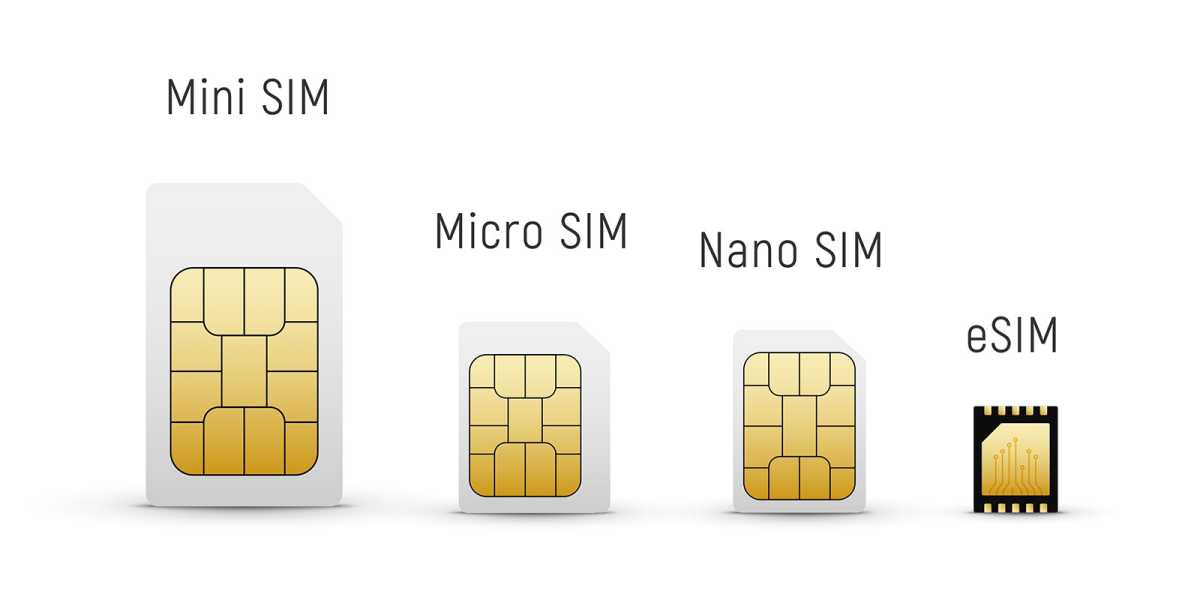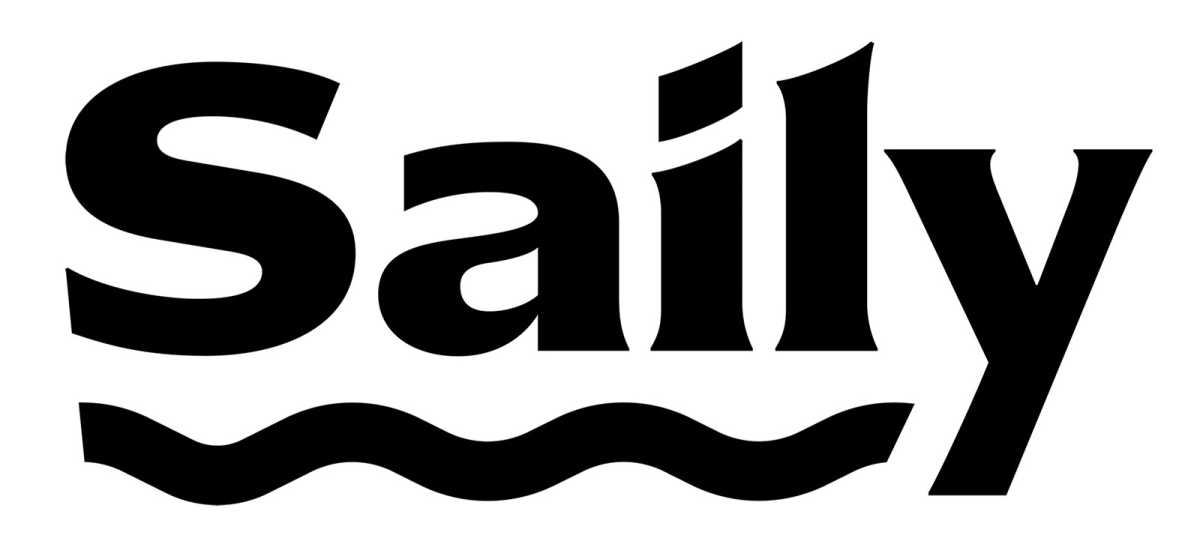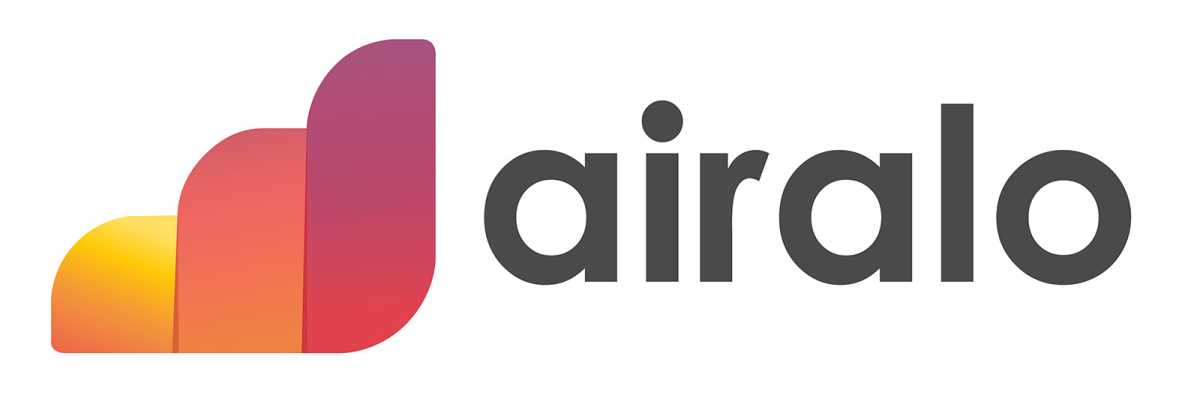Best eSIM plans: Our top picks at a glance
- Best eSIM overall: Saily
- Best eSIM runner-up: Ubigi
- Best free eSIM: Nomad
- Best cheap eSIM: Jetpac
- Best pay-as-you-go eSIM: Lyca Mobile
- Best eSIM for international travel: Ubigi
- Best eSIM for global travel: Jetpac
- Best eSIM for calls and texts: AloSIM (get a free international number via Hushed)
- Best eSIM for short trips: Jetpac
- Best eSIM for long trips: Holafly
- Best eSIM for frequent travellers: Nomad
- Best eSIM for business users: Saily
- Best eSIM for security and privacy: Saily
- Best eSIM for unlimited data: Jetpac (1 week) | AloSIM (2 weeks) | Holafly (global)
eSIMs are becoming increasingly popular while travelling for unlocking cheaper mobile data, or for avoiding roaming charges altogether. But eSIMs have a number of other benefits you may not have considered, making them more than just an essential holiday purchase:
- Quick and easy to set up, typically with instant activation
- Supported by many Android phones and iPhones manufactured since 2018
- Work as a replacement for or in addition to your removable SIM card
- Make it easy to switch between providers to get the best value from your phone plan
- Multiple eSIMs can be supported on a single device, without taking up additional physical space
- Great for travel: Pay local fees for your mobile data and avoid roaming charges
- Great for business use: Manage personal and business plans on one device
- Secure: More difficult to lose, have stolen, or even break than a removable SIM card
- Remote app-based management: Easy to disable or transfer plans without access to your phone
- Privacy and security features: Some eSIMs now support virtual locations and ad/tracker blocking to keep you safe, unlock back-home entertainment services, and minimise your data usage abroad
- Eco-friendly: Less plastic; less waste
Selecting a suitable eSIM plan is much easier said than done when you consider just how many eSIM providers are available, with options from both regular mobile operators and the specialist eSIM providers we focus on here. Which eSIM is best for you will depend on your specific use case. In this article we guide you through how eSIMs work, and explain what are the top choices for the various use cases and most popular travel destinations.
What is an eSIM?

Shutterstock/Kolonko
There is a lot of confusion among users over what is an eSIM and what it does, with the ‘e’ in eSIM often assumed to mean ‘electronic’. Actually it is short for ’embedded’ and, just like the nano-SIM you are likely more familiar with, eSIMs rely on a hardware chip to operate. The difference here is that this chip is much smaller and not accessible to the user – you don’t remove and replace it like you would a nano-SIM.
Rather than it being preconfigured to work with a specific network operator, whereby switching operator would also require you to switch your SIM, you can configure an eSIM and select a suitable plan in your phone settings. So, it acts like a digital SIM, but it would be more accurate to think of it as a physical SIM with a digital plan.
Do I really need an eSIM for travel – what about roaming?
It’s important to note that travel eSIM providers typically cover only mobile data. This will include any calls and texts sent over app-based messaging services, such as WhatsApp, but it does not (usually) include regular calls and texts that use the phone number assigned by your mobile operator.
Services like AloSIM can give you an international number, but not your usual phone number. Using your own mobile network abroad to make phone calls and send texts is what’s known as roaming, and it can incure some heavy costs – especially in the wake of Brexit. While receiving texts is usually free, sending texts or making and receiving phone calls will typically be chargeable.
However, there are still some UK mobile operators who offer free roaming for data, calls and texts – at least in Europe – with O2 notable for being the only one of the big four to offer free roaming up to 25GB/month, while BT Mobile, Tesco Mobile, giffgaff, iD Mobile, Smarty, Lebara, Asda Mobile, Lyca Mobile and Talkmobile all have plans that offer free roaming, subject to fair-use policies and data caps.
For users of other mobile networks – and especially those who consume a lot of data or are travelling outside Europe – travel eSIMs are appealing because they typically beat the data roaming charges levied by mobile operators. And, if you can get by with WhatsApp and other app-based messaging services, you may not need to pay additional roaming fees for calls and texts.
Which eSIM providers offer free trials?
- Best: Nomad – 1GB of data, lasts 3 days, covers 48 destinations
- Runner-up: Airalo – 1GB of data, lasts 1 day, covers 7 destinations
- Also consider: GigSky – 100MB-500MB of data, lasts 7-15 days; Sim Local – unspecified amount of data, lasts 1 day
If you’re on a mission to save as much money as possible and your data needs are not huge, with a bit of legwork you could sign up to every free eSIM offer and potentially cover your entire break without incurring any additional charges. Do note, however, that many of these eSIMs will kick in as soon as you arrive at your destination, which means you may need to wait until you are abroad to successfully line up the free trials.
In the interests of saving money on data, it’s also worth considering Saily. A unique feature of this eSIM provider is its additional features for blocking resource-heavy ads and trackers, which it says can reduce your mobile data usage by as much as 28.6% – that’s a significant saving when you’re paying by the gigabyte! While Saily doesn’t offer the cheapest data in every location we investigated, depending on your usage this saving could easily tip the balance and make it cheaper overall.
Deal alert: For long weekend trips, many of Jetpac’s 1GB/4 day plans are currently on offer for just £1, including destinations such as Spain, France, Germany, Italy, Portugal and Greece, as well as the European regional eSIM, Mexico, Japan, Thailand and New Zealand.
What is the best eSIM for travel?
The best travel eSIM provider and plan will vary based on where you are going, and you’ll find options are available for selected cities, countries, regions and even global offerings. This makes finding the best value eSIM for your trip tough, but we’ve done the hard work for you – you can see the best eSIM for the most popular destinations and regions around the world below.
- Best travel eSIM for the UK: Nomad
- Best travel eSIM for Spain: Saily
- Best travel eSIM for France: Ubigi
- Best travel eSIM for Germany: Ubigi
- Best travel eSIM for Italy: Ubigi
- Best travel eSIM for Portugal: Airalo
- Best travel eSIM for Greece: Ubigi
- Best travel eSIM for Turkey: GigSky
- Best travel eSIM for Europe (regional plan): Ubigi
- Best travel eSIM for USA: Ubigi
- Best travel eSIM for Canada: Saily
- Best travel eSIM for Mexico: Airalo
- Best travel eSIM for Australia: Saily
- Best travel eSIM for New Zealand: Nomad
- Best travel eSIM for Japan: Nomad
- Best travel eSIM for China: Nomad
- Best travel eSIM for Singapore: Nomad
- Best travel eSIM for Thailand: Jetpac
- Best travel eSIM for Africa: Jetpac
- Best travel eSIM for the Middle-East: Jetpac
Our recommendations are based on pricing for 1GB, 3GB and 5GB of data at the time of publishing.
Best eSIM providers
Saily – best overall, and for security, entertainment, and minimising data usage

Saily
In a sea of similar eSIM providers, Saily stands out as the only fish in the pond to offer some unique additional features. Virtual location removes the need for (and cost of) a separate VPN subscription while travelling, allowing you to mask your true location to unlock back-home entertainment services and more, while attaining the privacy and security perks of a regular VPN. There’s also resource-heavy ad- and tracker blocking, which helps keep you safe and – importantly when you’re paying by the gigabyte – reduces your data usage. Saily claims you could see savings of up to 28.6%.
Like all good eSIM providers you’ll find competitive plans in more than 200 destinations, with unlimited plans available for select destinations. Unlimited tethering is thrown in, too, making it easy to share your data allowance with others by creating a mobile hotspot.
Ubigi – best for European travel

Ubigi
Set up in 2018, Ubigi is one of the original eSIM providers – and still one of the best. It promises coverage in more than 200 destinations, with strong 5G coverage in more than 60 of these. There is a wide range of flexible data plans, from 500MB right up to unlimited packages, and you can choose between one-off, monthly and annual plans.
Ubigi offers some of the cheapest prices for data in Europe, and it supports unlimited tethering.
Nomad – best free eSIM and for eSIM plan deals

Nomad
Nomad is not just a very reliable, good-value eSIM provider, but it provides the best free eSIM trial we’ve seen, and you’ll find some great time-limited deals on select destinations through the app. The Nomad free trial is generous, offering 1GB of data that lasts for 3 days across 48 of the more than 200 destinations it supports.
Beyond this, we found Nomad offered the cheapest prices for frequent travellers, especially those visiting Asia or simply back home in the UK. It makes sharing data with family and friends simple, too.
Holafly – best for heavy data usage

Holafly
Holafly’s eSIM packages are not cheap when compared to the 1GB, 3GB and 5GB plans of its competitors, but that’s because they aren’t meant for the faint-hearted. Nearly all Holafly’s packages are unlimited, and they are designed with heavy data users in mind – across a whopping 266 destinations!
Prices decrease dramatically over time. For example, a single day of unlimited data in the US might cost you £6 for a single day, but over a week it drops to £3.43/day, over two weeks to £2.71/day, right up to 90 days where it costs just £1.29/day.
It is possible to get an EU phone number for text messages if you sign up to a monthly or annual plan.
AloSIM – best for calls and texts

AloSIM
AloSIM offers competitive pricing in more than 200+ countries, and we found it the cheapest offering for unlimited data during two-week stays. Where it really stands out, though, is in its integration with Hushed: where most eSIM providers support only data, AloSIM offers you a phone number in more than 300 area codes for making calls and sending texts. Where AloSIM falls down is in its provision for global plans.
Jetpac – best for long-weekend trips

Jetpac
Jetpac offers very low prices on data in more than 200 destinations, and we found it offered the cheapest unlimited data options for one-week stays.
Where Jetpac really outshines the competition in its provision for four-day plans, meaning you don’t need to pay for more data than you need on a long weekend away. Plus, right now many of these four-day plans are reduced to just a pound – take advantage of 1GB of data for £1 in destinations including the UK, Spain, France, Germany, Italy, Portugal, Greece, Europe (regional), Mexico, Japan, Thailand and New Zealand.
GigSky – best for cruises

GigSky
In addition to providing some of the lowest-price plans across more than 200 destinations, GigSky also supports plans for more than 200 cruise ships, covering you whether you’re at sea, at port or on land.
There’s also a free trial of between 100MB and 500MB of data for all destinations, lasting between 7- and 15 days, so you can try the service before you buy.
Airalo – strong all-rounder

Airalo
We like Airalo because it does a good job of combining some of the best bits of the packages from other eSIM providers. For example, the provision of a phone number for calls and texts is not available across all 200+ destinations, but it is an add-on option for many. There’s also a generous 1GB (although only 1 day) free trial, usable in the UK, US, Japan, Portugal, Greece, Spain and Turkey.
Airalo selects reliable local mobile operators in each destination, which means you’ll find much better value at some destinations (for example, Portugal and Mexico) than others. Generally speaking, the smaller-data packages seem to offer the best value, and though other eSIM providers might be slightly cheaper in their 3GB plans, Airalo often beats them on the length of validity.
Other popular eSIM providers
Why use an eSIM and not a local SIM?
An eSIM is a trending choice for many reasons. For starters, there’s no need to wait for a physical SIM to arrive in the post. When you arrive at your destination, you won’t need to hunt around the airport or bus station to find, choose and purchase a local SIM card.
With a compatible device (of which there are now many), it’s effectively as simple as scanning a QR code and installing an app to get going. Many have the benefit of automatically starting when you arrive and connecting to a local network, so you can prepare before you even leave your home. Activation is usually instant, unlocking cheaper fees and avoiding roaming fees the second the plane touches down on foreign soil.
With no physical SIM cards to deal with it’s easier and cheaper for eSIM startups to get going, helping to create a competitive market for consumers with more choice and lower costs. Since multiple eSIMs are supported on a single device, you can jump between providers and take advantage of the best value plan for the given situation, or even swap between business and personal plans. In future, removing the requirement of a SIM tray altogether might free up hardware designers to create even sleeker smartphones.
eSIMs are also more secure and easier to move between phones than a traditional SIM card, especially when you don’t have a SIM tray removal tool on your person. Or you can use them alongside your existing SIM. Throw in the fact you can remotely manage an eSIM via a mobile app, making it easy to disable or transfer plans from one device to another, and it seems a no-brainer to us.

Shutterstock/song about summer
Does my mobile operator offer eSIMs?
Almost certainly, yes. All the big UK phone networks – EE, O2, Three, and Vodafone – offer eSIMs. In the US, T-Mobile, AT&T and Verizon all do as well.
Plenty of virtual networks also offer eSIM, including the likes of iD Mobile, Giffgaff, Smarty, Lyca Mobile and Voxi in the UK, and Mint Mobile in the US.
There are a number of operators that don’t have eSIM support yet, including Talkmobile, Asda Mobile and Ecotalk, while others like Tesco Mobile offer it only via Pay As You Go plans. This is likely to change over time as eSIMs become more popular.
Interesting fact: since iPhone 14, all Apple smartphones sold in the US are now eSIM only, which means you have to use an eSIM to connect your phone plan.
Should I get an eSIM plan from my mobile operator?
On the one hand, it doesn’t make much difference whether you get an eSIM from your mobile operator or a specialist eSIM provider. You may feel like you’d be more comfortable sticking with the service provider you already know and trust, and this might also make managing monthly bills easier for you. Plus there may be additional perks such as discounts for existing customers.
There will be some differences between eSIM providers in terms of their coverage and access speeds (you’ll want 5G or 4G LTE for the fastest data speeds), but the major difference is going to be price.
It is often the case that a dedicated eSIM provider will offer you a cheaper price than the big-name networks, and likely also better value for short-term or multi-location usage. This is, of course, partly because they must work harder to attract new customers. It can also be easier to pay purely for the coverage and allowance you need from an eSIM provider. Do note, however, that prices change frequently – what is the best deal one day may not be the next.
Mobile data is often the most expensive part of your roaming costs while travelling, and so this may be your primary concern when looking for an eSIM provider. Most specialist eSIM providers offer only data, which will cover messaging apps such as WhatsApp, but no support for standard calls and texts. This is also true of many mobile operator’s travel eSIMs – if you want the whole package then purchasing a roaming add-on might work out better value.

Shutterstock/M Stocker
How to choose the best eSIM plan
While eSIMs are quick and easy to purchase and start using, there’s a lot to consider before you buy one to make sure it’s the right choice. It’s not just about the data and price, so here are all the important things to factor when choosing an eSIM.
Where will you be using the eSIM?
As eSIMs are a popular choice for travel, the destination of your trip is an important factor here. We’ve listed the best eSIMs for lots of different places above.
Whether you should choose a country, regional or global eSIM depends on a few different factors, but primarily where you are travelling to. If you’re going to visit a lot of different countries then a global eSIM might be the best choice for compatibility, but it will nearly always be the most expensive option.
Regional eSIM deals cover entire continents, such as Europe and Asia, or areas like the Caribbean Islands. If you’re just visiting a single country, there’s no use paying for locations you won’t use. But if you need a local number while you’re there, a removable local SIM might be more appealing than an eSIM, unless you opt for AloSIM.
Which smartphone are you using?
Both Android and iOS (iPhone) operating systems support eSIM, but your specific phone or tablet model must also support eSIM for one to work. While many modern devices tick the box (every iPhone since 2018, for example), you’ll need to check your manufacturer’s spec sheet to confirm if it is eSIM-compatible.
How strong is the coverage in your travel destination?
If you are buying a regional or global eSIM plan, it’s worth checking that coverage in the destination you are visiting is strong. Check our advice above for the top destinations.
How much data do you need?
The other things you need to decide on are exactly the same as if you were buying a regular SIM card or phone plan. Make sure it has enough data for your needs. Since calls and texts are not usually included, also consider that you’ll likely want to use a messaging service such as WhatsApp to cover these.
If you’re unsure how much data you need, our advice is to underestimate: it’s typically very easy to top up if you run out and need more. Most networks and eSIM providers have an app and this is where you’ll be able to do things like add more data on the fly.
Is tethering supported?
Tethering allows you to turn your device into a Wi-Fi hotspot, letting other users (friends or children, for example) to piggyback your network connection, saving you paying for it twice. Do keep in mind that this will eat up your data allowance more quickly – especially if they tend to stream a lot of video. For the latter, the promise of 5G connections for the fastest data speeds will be appealing.
Are there hidden costs?
eSIM providers sell you data that lasts for a set time period. Free trials might only last one day, 1GB Jetpac plans last only 4 days, and many 3GB packages might only last 7 days. If you’re away for a longer period, your eSIM is either going to run out, or you are going to end up paying more than you planned.
As many modern phones support two active SIMs or eSIMs, consider whether you might want to pair an eSIM for data with a local SIM for cheap or even free calls and texts – roaming costs could come as a surprise if you think your eSIM is covering everything.
Do you want additional features?
If you need or want additional features such as virtual location (similar to a VPN) and ad/tracker blockers (which will help reduce your data usage), look to a provider like Saily.

Shutterstock/Blue Titan
Future of SIM technology: What is an iSIM?
Although eSIMs have been around for many years before gaining popularity, the next version is seemingly already on the way: eSIMs may eventually be replaced with iSIMs.
iSIM stands for Integrated SIM. Where an eSIM already saves space inside a device, the iSIM saves even more – it’s up to 98% smaller than an eSIM.
This is because it will be built into the processor, which has the advantage of being more secure (thanks to a tamper-resistant element or TRE), as well as more power efficient.
Common eSIM questions answered
eSIMs FAQ
What is an eSIM?
An eSIM is an embedded subscriber identity module. It uses a smaller hardware chip than a traditional SIM, which is embedded within your phone at the point of manufacture and not accessible to the user. You can select an eSIM plan from your phone settings; after which it will operate in the same way as the plan connected to a removable SIM.
Why should I use an eSIM?
eSIMs are attractive for unlocking cheaper mobile data when travelling outside your home country, and avoiding roaming costs. Wherever you are, eSIMs are attractive for allowing you to quickly and easily switch between phone plans to attain the best value. You might use an eSIM to manage business and personal phone plans on a single device, and they are also appealing for the fact they are more secure than a removable SIM and support remote management.
Why should I not use an eSIM?
Many older or budget smartphones do not support eSIM, so it may not be an option on your device. If it is, you may still decide it is not for you. Many eSIM providers supply only mobile data, making them unsuitable for calls and texts. You may also find that while eSIM providers offer great rates abroad, they aren’t as cheap as mobile operators back home. Should something go wrong with your device, you are unable to quickly and easily put your SIM into a spare phone or a friend’s phone to access your plan. Other suggested reasons not to use an eSIM include the fact it can take longer to restore an eSIM than a removable SIM in a new phone, you can be more easily tracked by network providers, and there may be an increased likelihood of hacking.
What is the best eSIM provider?
Saily from NordVPN is the best eSIM provider. It provides competitive plans in more than 200 destinations, with unlimited plans available for select destinations. Moreover, it stands out for its unique additional features: Virtual location removes the need for a separate VPN subscription while travelling, allowing you to mask your true location to unlock back-home entertainment services and more, while unlocking the privacy and security perks of a regular VPN. There’s also ad and tracker blocking, which helps keep you safe and, importantly, reduces your data usage. Unlimited tethering is thrown in, too.
What is the difference between SIM, eSIM and dual-SIM?
SIM merely refers to subscriber identity module, a chip that is added to your phone and stores information that identifies and allows access to the user on a mobile network. An eSIM is an embedded SIM, which means the chip is built into the phone rather than being added later by the user. Dual-SIM refers to phones that allow more than one SIM – either SIM or eSIM – to be active at once.
Can I use eSIM and SIM or dual-SIM at the same time?
Yes. If your phone supports both dual-SIM and e-SIM, then dual-SIM can combine two SIMs, two eSIMs, or one SIM and one eSIM. Note, however, that many older or budget Android phones support dual-SIM but not e-SIM, meaning the two lines must both use removable SIMs.
What is the difference between eSIM and roaming?
eSIM makes the connection between your phone and a mobile network possible. Roaming is when you use that mobile network’s service outside your home country. There is often a higher cost involved with roaming, and eSIMs are attractive because they allow you to connect to a local network abroad rather than your home network.
Do I have to use an eSIM to avoid roaming charges?
Which phones support eSIM?
Apple phones have supported eSIM since its introduction to the iPhone XS, XS Max and XR models in 2018. Dual-eSIM support is available in all iPhones since the iPhone 13.
Samsung supports eSIM in the Galaxy S20+, Galaxy Z Fold 3+, and Galaxy Z Flip 3+ families, while Google added it to the Pixel line starting with the Pixel 3a XL.
Other phone makers, including Motorola, Sony, Oppo, OnePlus, Xiaomi and Huawei, support eSIM in all recent flagship models.
Which smartwatches support eSIM?
You’ll find eSIM support in cellular versions of the Apple Watch SE, Apple Watch Series 3+, and Apple Watch Ultra/Ultra 2+.
Samsung has support eSIM in the cellular versions of the Galaxy Watch since gen 4, while Google has done the same in all cellular versions of Pixel Watch.
You can also find eSIM support in cellular smartwatches from Huawei, Xiaomi, Oppo and Mobvoi (TicWatch).
Which tablets support eSIM?
eSIM has been supported in cellular iPads since 2018, so you’ll find it on all models of the iPad Pro 11in, iPad Pro 12.9in 3rd Gen+, iPad Air 3rd Gen+, iPad 7th Gen+, and iPad mini 5th Gen+.
Microsoft’s Surface Go 2+ LTE, Pro X and Pro 9 5G all support eSIM.
You’ll also find eSIM in the Samsung Galaxy Tab S8+ 5G and later, the Huawei MatePad Pro 5G, and the Lenovo Tab P11 5G.
Many tablets still offer physical SIM slots rather than eSIM support.
Which laptops support eSIM?
Laptops that support eSIM are often labelled WWAN-ready. They have a built-in LTE or 5G cellular modem, such as the Qualcomm Snapdragon X55/X65 or Intel XMM 7360.
In addition to recent Microsoft’s Surface line, you’ll find eSIM in some high-end business laptops from HP (EliteBook 840 G7+, Elite Dragonfly G2+, Spectre x360), Lenovo (X1 Carbon Gen 8+, x1 Yoga Gen 5+, ThinkPad T14s/T14 Gen 2+, Yoga 5G), and Dell (Latitude 9420/9430, 7320/7330, and 5430/5530).
Does my phone support eSIM?
The quickest way to check is to dial *#06# – if you see an EID then your phone supports eSIM. You can also search in your phone’s settings menu for eSIM.
How do I set up and activate an eSIM on Android?
Exact instructions differ depending on the exact brand of Android phone you have. Genrally speaking, you should go to Settings > Network & Internet > SIMs/Mobile network > Add SIM/Add eSIM > Use a QR code and scan the QR code provided by your chosen provider. You can quickly find this option regardless of brand by searching for eSIM within the Settings menu. You can then adjust the settings for which SIM controls data, calls and texts on your phone.
How do I set up and activate an eSIM on iPhone?
In iOS 16 open Settings > Mobile Data/Cellular > Add eSIM > Use QR code, then scan the QR code provided by your chosen eSIM operator and follow the prompts to activate.
How do I switch between eSIM and SIM?
On an iPhone, open Settings > Mobile Data/Cellular > Default Voice line and select which SIM controls calls and texts by default. You can also select the default SIM for data by tapping on Mobile Data.
On an Android phone, go to Settings > Network & Internet > SIMs/Mobile Network. You will be able to select the Preferred SIM for calls, mobile data and SMS.
How do I delete an eSIM?
On iPhone, open Settings > Mobile Data/Cellular and select the eSIM you want to remove. Scroll down and tap Delete eSIM, then confirm your choice.
On an Android phone, open Settings > Network & Internet > SIMs/Mobile Network and select the eSIM you want to remove. Tap Remove or Delete, then confirm your choice.
How do I reinstall an eSIM?
If you wish to reinstall a deleted eSIM and a restore option is not provided then you may need to ask the provider to reissue the eSIM and get a new QR code.
Can I transfer an eSIM to a new phone?
It is possible to transfer an eSIM to a new phone, but the process depends on who is your eSIM provider. If your eSIM was provided by a mobile operator then you should find eSIM Transfer tools in the iOS or Android Settings menus. If you are using a specialist eSIM provider then you should log into the mobile app and request a transfer or reinstallation. If you still have the original QR code or manual SM-DP+ setup details, you may be able to manually add the eSIM to the new phone.
Can I use more than one eSIM?
If your phone supports dual-SIM then two eSIMs can be active at a time. Your phone will be able to store as many as eight inactive eSIMs, with the exact number dependent on your smartphone model.
Can I use an eSIM at home or only for travel?
You can use an eSIM anywhere in the world, though you will likely find better rates from mobile operators in your home country. The fact most specialist eSIM providers do not cover calls and texts also means an eSIM is unlikely to replace your regular mobile network for use at home.
Can an eSIM be used on two devices simultaneously?
No. An eSIM is tied to a device’s embedded hardware and will not work on more than one device at a time. Attempting to use an eSIM on more than one device will cause activation to fail on the second, or the first to lose network connectivity.
Does an eSIM change my phone number?
If you are using an eSIM in place of your regular SIM to connect to your usual mobile network, your phone number stays the same.
If you are using an eSIM from a different mobile operator in addition to your regular SIM, it will have its own phone number.
If you are using a data-only eSIM from a specialist eSIM provider then it will not support calls and texts so will not have its own phone number.
Does an eSIM have weaker signal than a SIM?
There is no difference between a SIM and an eSIM in terms of signal strength because they merely store information. Things that affect signal strength include the service provider’s coverage in your area, your phone hardware (e.g. the antenna), environmental factors like the weather, and your distance from the cell tower and any obstacles (e.g. tall buildings) that obstruct the path.
Does an eSIM drain my battery?
While an eSIM does not drain your battery any more than a regular SIM, searching for and maintaining a connection to a mobile network does use your phone’s battery. If network coverage is poor, you are frequently switching between two SIMs/eSIMs, or both are active at once, you may see battery power reduce faster. It is worth switching off whichever SIM you are not using at any moment in time.
Are eSIMs safe for online banking?
There is no reason to believe an eSIM would be less secure than a regular SIM for online banking. As always, you should take precautions to protect your online security, running a good antivirus app, using strong passcodes or biometric logins, and keeping your OS and banking apps updated.
Can I make phone calls with an eSIM?
If your eSIM was provided by a mobile operator that supports calls then yes. However, most specialist eSIM providers supply data-only plans.
Can I send text messages with an eSIM?
If your eSIM was provided by a mobile operator that supports text messages then yes. However, most specialist eSIM providers supply data-only plans.
Can I get online with an eSIM?
Absolutely. eSIMs are designed to help you access better value mobile data.
Can I use an eSIM for WhatsApp?
You can access your WhatsApp account on a device connected to a network via any eSIM because WhatsApp works over a data rather than cellular connection. However, if you wish to set up a new WhatsApp account using a mobile number, note that many eSIM plans are data-only and do not have a phone number.
How long does it take to activate an eSIM?
Activation of an eSIM should be almost instant, taking a few minutes at most. You can speed up the process by making sure you have a stable Wi-Fi or mobile data connection for downloading the eSIM profile, and that your phone’s operating system is up to date.















